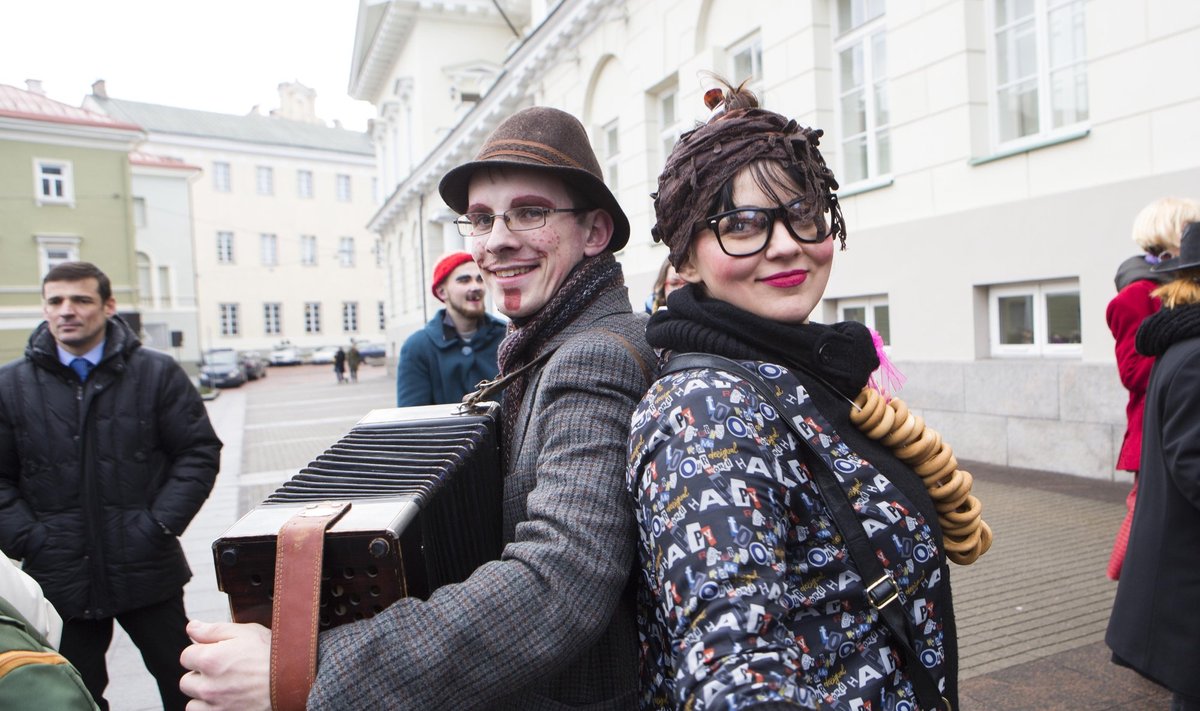Užgavėnės, or lovingly called pancake day by those with a sweet tooth, has a long tradition in Lithuania as the day on which the winter is chased away to make way for the upcoming spring. Every year the holiday festivities take place in the days before the Catholic lent that will last until Easter commences. Užgavėnės gives participants the last chance to load up on sweet and savoury Lithuanian pancakes before the fasting starts. The celebration is similar to other Roman Catholic holiday traditions all over the world, such as Mardi Gras, Shrove Tuesday, and Carnival.
On Tuesday evening, the courtyard at the Teachers' House in Vilnius was crowded with people and scents of wood fire, sweets and, of course, pancakes. People gathered outdoors, anticipating the burning of Morė, a giant straw doll with a female head that symbolises the darkness of winter and the problems people endure.
Užgavėnės is all about saying goodbye to the winter. If the burning of Morė is not enough to make sure winter disappears, there is another major element to the holiday to ensure that the result is achieved. This second tradition shows Lašininis, a fat man who embodies the winter, and Kanapinis, a thin man personifying the spring, stand off in a battle as children cheer them on.
It is customary for the participants of Užgavėnės to wear masks of devils, witches, goats, doctors, gypsies, and all other sorts of characters. The celebrations in Vilnius this year even saw a single cowboy make its way through the crowds. The participants and masqueraders filled themselves with pancakes with a variety of toppings and traditional spurgos, a sort of doughnut balls.

22-year old Dovilė, who had not celebrated Užgavėnės for over ten years, sang happily the songs from her childhood, and said she felt like a child again. "All you need to know to join in is the words: 'Žiema, žiema, bėk iš kiemo' which mean 'Winter, Winter, go away'."
Music and fire
A group of folk musicians took to the stage, playing traditional Lithuanian songs and asking the crowd to join in with song and dance. Soon a circle formed in the centre of the Teachers' House courtyard in which couples, devils, and a lone grim reaper, danced traditional Lithuanian dance. Songs about drunk bears, willows and hills and youthful romantic endeavours were sung.
When it was time for the battle of the spring and the winter, children started chanting Kanapinis’s name in support, and laughed loud when Kanapinis told Lašininis: "We already danced winter away. Now I am going to dance you away." When at last Kanapinis defeated Lašininis, stating "What kind of a man are you!?" it was time to set Morė ablaze. Children and their parents alike held hands and danced around the burning doll to the jolly tunes of the musicians.
The celebrations in Vilnius commenced on the weekend with a market that spread across Gediminas Avenue, and finished with the burning of Morė at the Teachers' House on Tuesday. The holiday is celebrated throughout the country. The biggest celebration took place at Rumšiškės open-air ethnographic museum.

